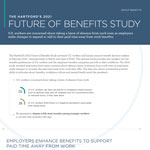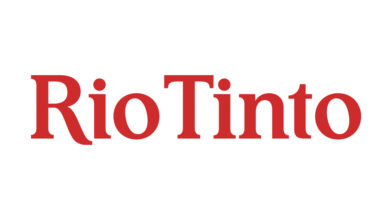Leave Dilemma: New Study By The Hartford Finds Nearly One-third Of U.S. Workers Concerned About Taking A Leave Of Absence

- As employers increased the amount of paid time away from work they offer, 31% of employees say they are fearful of workplace repercussions if they take a leave of absence
- New data shows pandemic accelerated positive shifts in attitudes about benefits, workplace culture and mental health
HARTFORD, Conn.–(BUSINESS WIRE)–New research from The Hartford, a leading provider of employee benefits and absence management, showed there is a perceived stigma associated with taking a leave of absence from work. Thirty-one percent of U.S. workers say they are fearful of workplace repercussions, such as getting fired, laid off, skipped over for a promotion/raise or reduced hours, if they take leave, and 29% believe there is a negative perception associated with taking leave.
By generation, stigma is felt most acutely among younger workers – a concern that subsides with age. Half of Gen Z/younger Millennials (50%) say they are fearful of workplace repercussions for taking leave compared with 41% of older Millennials, 30% of Gen X and only 16% of Baby Boomers.
The Hartford’s 2021 Future of Benefits Study, which polled U.S. workers and human resource benefit decision-makers in February 2021 – and previously in March and June of 2020 – also revealed that these concerns among employees surfaced even as employers reported increasing the various types of paid time away from work they provide beyond state or federal requirements in the past year.
“The COVID-19 crisis and devastating losses of the past year have crystallized the necessity to support workers who need to take time away from work to care for themselves or a family member,” said Jonathan Bennett, head of Group Benefits at The Hartford. “These benefits were built to maintain work/life balance, workforce engagement and productivity, and it is encouraging to see that many employers have made changes to increase the amount of paid time off they offer. Now, the next step is to ensure employers provide their workforce with the assurance and support to take time off when they need it.”
A majority of employers (75%) said they expanded or added benefits that support paid time away from work, with the most common being medical leave and sick time:
- Medical leave: 46%
- Sick time: 46%
- Family leave: 39%
- Parental leave: 30%
- PTO/vacation time: 30%
Bullish about benefits
The Hartford’s Future of Benefits Study shows there has been a positive shift in employee attitudes about benefits following a decline in June 2020. The value employees place on benefits and the trust that their company is making the best benefits decisions increased to above pre-pandemic levels:
- 84% of employees say they value the insurance benefits their company offers to them, which us up from 73% in June 2020 and 80% in March 2020
- 69% of employees now say they trust their company is making the best decisions about the benefits they make available, which us up from 55% in June 2020 and 61% in March 2020
- More employees (82%) also say that the benefits they are offered currently meet their needs (76% in March 2020 and 70% in June 2020)
The research also shows a heightened interest in the insurance benefits that will help employees protect their paycheck when they experience an unexpected illness, injury or loss of a loved one. Many employees elected to add new benefits during their recent open enrollment period, including the following which they said were new choices for them:
- Critical illness insurance: 35%
- Hospital indemnity insurance: 32%
- Accident insurance: 24%
- Life insurance: 21%
- Short-term disability: 14%
- Long-term disability: 13%
“Faced with unexpected situations, some Americans relied on their benefits for the first time this past year. In doing so, many came to realize the full magnitude of the importance of benefits and the peace of mind they provide,” Bennett said. “These bedrock benefits, which are now being viewed as more relevant since the onset of the pandemic, are the foundation for how employers care for their workforce and help employees protect their paycheck when faced with unexpected circumstances.”
Empathetic and inclusive workplace for mental health
In addition to raising awareness about paid leave and employee benefits, the pandemic has placed a greater focus on mental health. Fifty-nine percent of all U.S. workers say their company’s culture has been more accepting of mental health challenges this past year and 70% say their mental health is just as important to their company as their physical health and well-being.
Although progress has been made, some workers are still struggling and many say their mental health affects their productivity. Twenty-seven percent of employees say they struggle with depression or anxiety most days or a few times a week (up from 20% in March 2020). U.S. workers say their mental health affects their productivity at work in the following ways:
- Trouble focusing/concentrating: 61%
- Feeling irritable/angry: 46%
- Missed time (late to work, leave early, missed days, unexpected absence): 29%
- Unable to collaborate: 19%
- Missed deadlines/meetings/quotas: 18%
As the country continues to move forward into different phases of re-opening and more employers transition their workforce back to the workplace, The Hartford recommends that employers:
- Offer resources that address the overall well-being of their workforce – encompassing health and mental wellness, as well as financial resilience;
- Foster an open and inclusive work culture that breaks down stigma associated with mental health and encourages employees to seek the support they need;
- Recognize that the desire for paid leave is not going to diminish once the pandemic is over. Lean on insurance carrier partners for help developing leave and absence strategies, while navigating the growing complexities of administering and managing different types of leaves and new regulations; and
- Communicate year-round about the various benefits they offer employees, not just at enrollment time. With additional communication employees can more easily access the benefits when the need arises. This will also help employees make informed benefit decisions and appropriate selections for their unique life circumstances during annual enrollment time.
Insuring more than 20 million Americans, The Hartford is a leading provider of employee benefits products and services, including leave management, group life and disability insurance, as well as other voluntary products. For more information, visit www.thehartford.com/groupbenefits.
Methodology
The Hartford’s 2021 Future of Benefits Study was fielded from Jan. 11 – Feb. 19, 2021 and included 617 employers and 1005 employees. The previous two waves of the research were fielded in 2020. The first wave was fielded from Feb. 27 – March 13, 2020, just before the pandemic escalated in the United States, and included 761 employers and 1,503 employees. The second wave was fielded from June 15 – June 30, 2020 and included 567 employers and 1,038 employees. The employers surveyed were HR professionals who manage/decide employee benefits and employees surveyed were actively employed. The margin of error is employer +/- 4% and employee +/-3% at a 95% confidence level.
About The Hartford
The Hartford is a leader in property and casualty insurance, group benefits and mutual funds. With more than 200 years of expertise, The Hartford is widely recognized for its service excellence, sustainability practices, trust and integrity. More information on the company and its financial performance is available at https://www.thehartford.com. Follow us on Twitter at @TheHartford_PR.
The Hartford Financial Services Group, Inc., (NYSE: HIG) operates through its subsidiaries under the brand name, The Hartford, and is headquartered in Hartford, Connecticut. For additional details, please read The Hartford’s legal notice.
HIG-E
Some of the statements in this release may be considered forward-looking statements as defined in the Private Securities Litigation Reform Act of 1995. We caution investors that these forward-looking statements are not guarantees of future performance, and actual results may differ materially. Investors should consider the important risks and uncertainties that may cause actual results to differ. These important risks and uncertainties include those discussed in our 2020 Annual Report on Form 10-K, subsequent Quarterly Reports on Forms 10-Q, and the other filings we make with the Securities and Exchange Commission. We assume no obligation to update this release, which speaks as of the date issued.
From time to time, The Hartford may use its website and/or social media outlets, such as Twitter and Facebook, to disseminate material company information. Financial and other important information regarding The Hartford is routinely accessible through and posted on our website at https://ir.thehartford.com, Twitter account at www.twitter.com/TheHartford_PR and Facebook at https://facebook.com/thehartford. In addition, you may automatically receive email alerts and other information about The Hartford when you enroll your email address by visiting the “Email Alerts” section at https://ir.thehartford.com.
Contacts
Michelle Symington
860-547-5385
[email protected]





